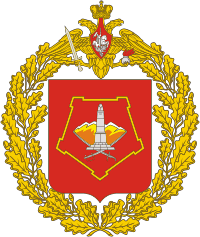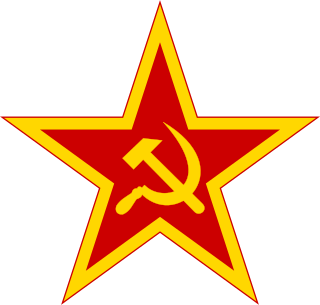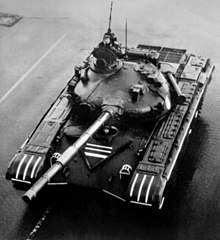
The 8th Guards Order of Lenin Combined Arms Army is an army of the Russian Ground Forces, headquartered in Novocherkassk, Rostov Oblast, within Russia′s Southern Military District, that was reinstated in 2017 as a successor to the 8th Guards Army of the Soviet Union's Red Army, which was formed during World War II and was disbanded in 1998 after being downsized into a corps.

The 201st Gatchina Twice Red Banner Motor Rifle Division was originally raised twice in World War II as part of the Soviet Union's Red Army and is now part of the Russian Ground Forces.

The Russian 102nd Military Base, officially known as the 102nd Military Base of the Group of Russian Forces in Transcaucasia is a Russian military base in Gyumri, Armenia, part of the Transcaucasian Group of Forces. It was formerly the base of the 127th Motor Rifle Division of the Soviet Seventh Guards Army. The base is about 120 kilometers (75 mi) north of the Armenian capital, Yerevan.

The Volga–Ural Military District was a military district of the Russian Ground Forces, formed on 1 September 2001 by the amalgamation of the Volga Military District and the Ural Military District. The headquarters of the Ural Military District, located at Yekaterinburg became the new headquarters of the merged district. In 2010 the District was merged with part of the Siberian Military District to form the new Central Military District.
The 2nd Guards Tank Army was a large military formation of the Red Army and later the Soviet Army.
The 59th Guards Kramatorsk Order of Red Banner, Order of Suvorov, Order of Bogdan Khmelnitsky Motor-Rifle Division of the Soviet Union's Red Army was initially formed near Krasnodar in March 1942 as the 197th Rifle Division. On the division's formation Colonel M. I. Zaporozhchenko took command, who stayed with the division until February 1943. Its second commander was Major-General G. P. Karamyshev from February 1943 up to the end of the war.
The 9th Tank Division was the designation of two separate formations of the Soviet Army. The original 9th Tank Division was formed in 1940 and later reorganized into a different division. During World War II, the Soviet Army formed the 9th Tank Corps, which was renamed the 9th Tank Division after the defeat of Germany in 1945. This second instance of the 9th Tank Division served with the Group of Soviet Forces in Germany from 1945 until about 1991, when it was disbanded.
The 266th Rifle Division was a rifle division of the Soviet Red Army during World War II. The 266th was formed three times during the war.
The 7th Guards Cavalry Corps of the Soviet Union's Red Army was a cavalry corps active during the Second World War. It was formed from the 8th Cavalry Corps in February 1943.
The 23rd Guards Motor Rifle Division of the Soviet Union's Red Army was a Motor Rifle Division active during the Cold War. After 1991-92, the Division's remnants were eventually incorporated into the new Army of Azerbaijan.
The 69th Rifle Division was an infantry division of the Red Army and later the Soviet Army, formed twice.
The 344th Rifle Division was an infantry division of the Red Army and the Soviet Army during World War II and the early part of the Cold War.
The 34th Rifle Division was an infantry division of the Red Army, formed twice. The division was first formed in 1923. It fought in the Soviet invasion of Manchuria in August 1945. Postwar, it became the 11th Machine Gun Artillery Division. The 34th was reformed from the 216th Rifle Division in 1955 but disbanded in 1956.
The 62nd Motor Rifle Division was a motorized infantry division of the Soviet Army. It was originally formed as a mobilization division in 1972 but became a regular division months later. It became a storage base in 1989 and was disbanded in 1994.
The 12th Motor Rifle Division was a motorized infantry division of the Soviet Army, formed twice. It was formed in 1957 from the 12th Rifle Division and disbanded in 1958. The division was reformed in 1960 and moved to Baganuur in Mongolia in 1979. It pulled out of Mongolia in 1990 and became a storage base in 1992. The storage base was disbanded in 1993.
The 7th Guards Tank Division was a tank division of the Soviet Army during the Cold War.
The 80th Guards Training Motor Rifle Division was a training unit of the Soviet Army during the Cold War.
The 4th Guards Motor Rifle Division was a motorized infantry division of the Soviet Army during the Cold War.
The 47th Guards Tank Division was a tank division of the Soviet Army during the Cold War that became part of the Russian Ground Forces after the dissolution of the Soviet Union.









